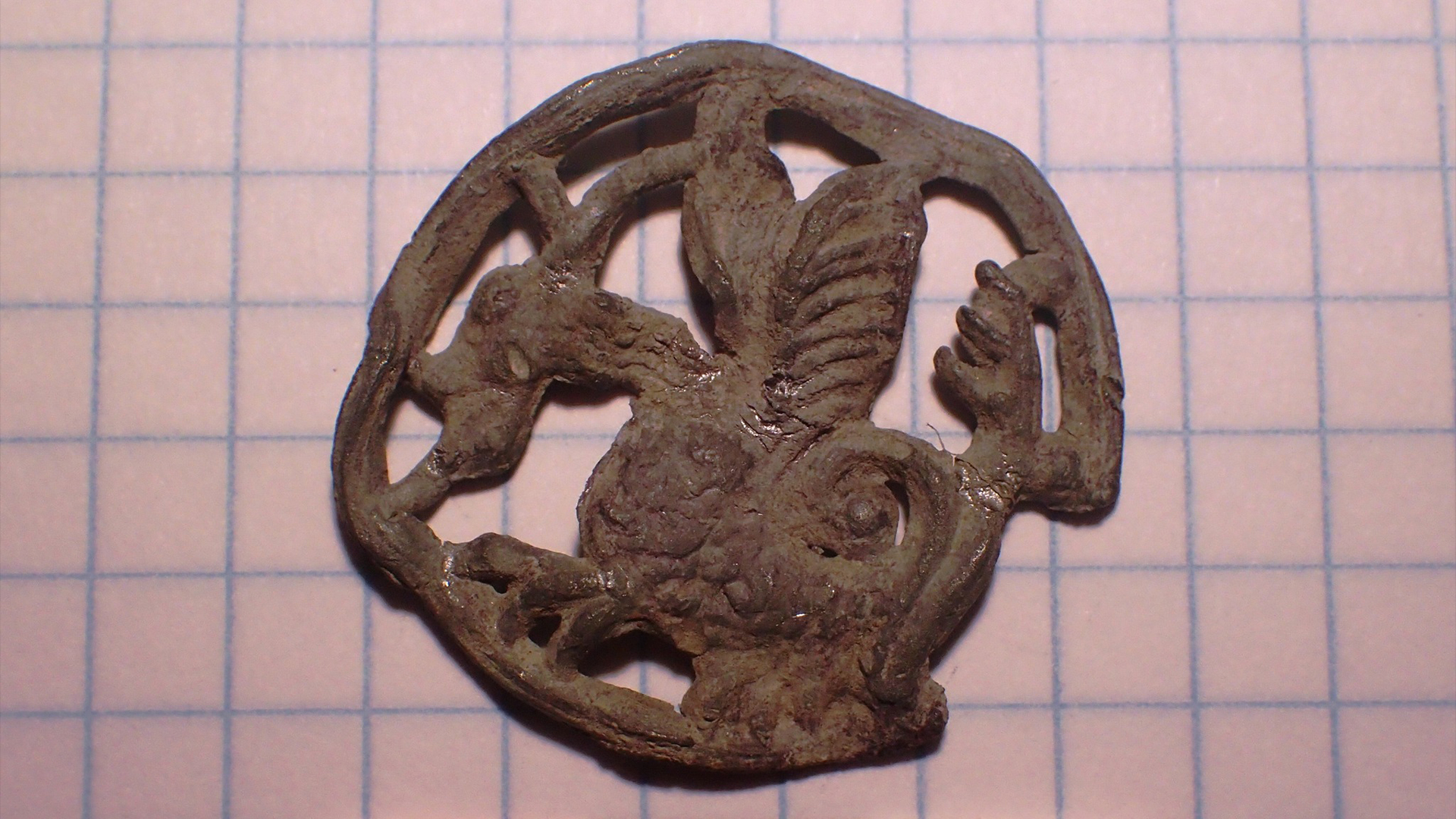Winged 'basilisk' on medieval pilgrim's badge discovered in Poland
Such badges were common among Christian pilgrims in the Middle Ages, but it's not clear what the basilisk represents.

A "pilgrim badge" from the Middle Ages featuring the design of a basilisk — a fearsome mythological creature akin to a dragon — has been discovered in southeast Poland. Such finds are rare and can help archaeologists chart the routes taken by Christian pilgrims hundreds of years ago.
Independent archaeologist Tomasz Murzyński, who's based in the Polish city of Wrocław, told Live Science in an email that a metal detectorist found the badge in January in the village of Wólka Nieliska, about 130 miles (210 kilometers) southeast of Warsaw. The detectorist then gave it to Murzyński.
Such historical finds belong to the state under Polish law, and so Murzyński handed over the artifact to the provincial curator of historical monuments in the nearby city of Lublin, who recently published a description and photographs of it on Facebook.
Related: Early medieval sword fished out of Polish river is in 'near perfect' condition
According to the translated Facebook post, the badge is made from lead alloyed with tin. It is circular, less than 0.04 of an inch (about 1 millimeter) thick and a bit more than 1 inch (2.8 centimeters) across. The basilisk symbol, which looks like a dragon with wings instead of front legs, is "cut out" of the surrounding circle and well decorated.
Medieval Christian pilgrims often wore badges like this to show that they had visited or were journeying to a particular holy place, and they were thought to protect the wearer from diseases, accidents and crimes during their travels, the post said.
The badges were also a way for pilgrims to distinguish themselves, and some pilgrims displayed several badges on their clothing.
Get the world’s most fascinating discoveries delivered straight to your inbox.
Pilgrim badge
The Facebook post noted that several medieval pilgrim badges have been found elsewhere in Poland — including six from the northwestern city of Stargard — and that large collections of such badges are now held in museums throughout Western Europe.
Pilgrim badges typically portrayed various shapes — such as spirals, squares, crosses or shields — but some also featured figures of particular saints, knights and animals, the post said.
One of the oldest badges, dating from the 11th century and found throughout Europe, is in the shape of a clamshell and indicates that the wearer was journeying on the Camino de Santiago, or "Way of St James" pilgrimage to Santiago de Compostela in northwestern Spain. The shell is still the symbol of the region today.
Pilgrim badges featuring Thomas Becket — signifying a pilgrimage to Canterbury Cathedral in southern England where he was murdered by knights of Henry II in 1170 — were also popular, the post said.
But this is the first medieval pilgrim badge to show a symbol of a basilisk; and while it's not known what it may mean, the Polish website Historia do Rzeczy ("History to the Point") noted its similarity to the mythological creature known as the Zilant, which is the official symbol of the Russian city of Kazan, more than 1,100 miles (1,770 km) to the northeast of where the badge was found.
For most of the Middle Ages, Kazan was governed by the Kazan Khanate, an Islamic Tartar state that prohibited the artistic representation of people or animals; and while the Zilant is thought to have derived from a Tartar mythological creature called Yilan, which means "snake," it only appears as the symbol of the city after the Tartar regime fell to Christian Russian invaders in the 1550s.
Tom Metcalfe is a freelance journalist and regular Live Science contributor who is based in London in the United Kingdom. Tom writes mainly about science, space, archaeology, the Earth and the oceans. He has also written for the BBC, NBC News, National Geographic, Scientific American, Air & Space, and many others.



